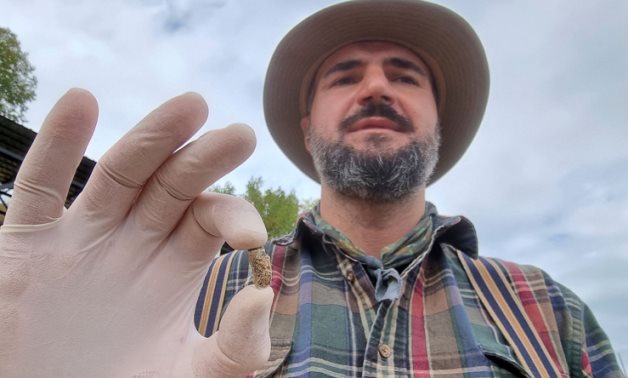
Giorgi Bidzinashvili, an archaeologist and the dig team's scientific leader, demonstrates a tooth belonging to an early species of human - REUTERS/David Chkhikvishvili
CAIRO – 18 September 2022: There are many archaeological discoveries that help us understand the nature of early humans and the races that preceded us in human history, including, for example, Neanderthals.
The discoveries of ancient human teeth have played a major role in determining the time period during which the first humans and Neanderthals lived.
Finding the oldest tooth in Georgia
Archaeologists have found a 1.8 million-year-old tooth and a laughing tooth belonging to an ancient human species in the village of Kvemo Urozmani in Georgia.
According to ancient-origins, archaeologists stated that the recent discovery was made at a site 20 kilometers from the discovery made in the late 1990s and early 2000s, which provides further evidence that the mountains of the South Caucasus may have been one of the first places where early humans settled after migrating from Africa.
According to Georgia's National Center for Research, Archeology and Prehistory, the statement said, Urozmani, along with Dmanisi, represent the oldest first human or early Homo settlement center in the world outside of Africa.
"This discovery is the most important thing that can happen at an archaeological site. We found direct human remains in the shape of the fourth premolars of the lower jaw. The remains indicate that the person was an adult, but the gender is hard to determine. With paleoanthropologists, we can say for sure that these are indeed ancient human teeth of the lower jaw,” said Giorgi Bidzinashvili, scientific leader of the excavation team.
Megalodon teeth
A team of researchers has found several giant teeth, belonging to the extinct prehistoric megalodon shark, in the Atacama Desert in Chile.
According to the American Newsweek magazine, Pablo Quilodrán, CEO of the Atacama Fossils and Natural History Research and Advancement Company, said: "Despite the looting of treasure hunters in the region, the country still has one of the largest scientific collections of megalodon teeth in the world." He pointed out that the megalodon, whose name means big teeth, is by far the largest shark ever, a super predator with a length of between 16 and 20 meters.
Comments
Leave a Comment